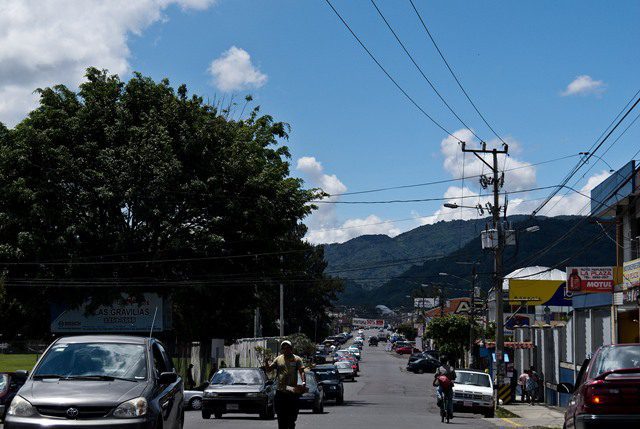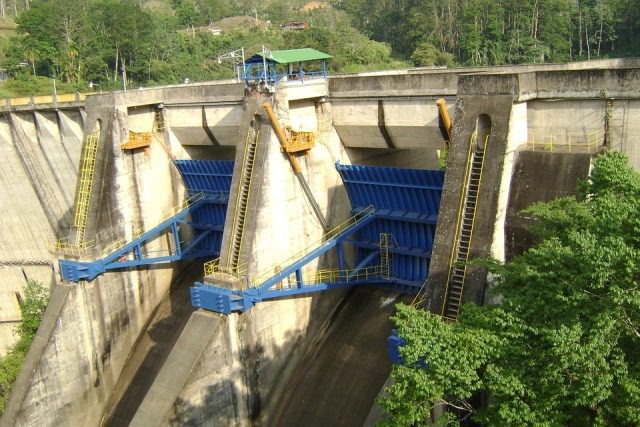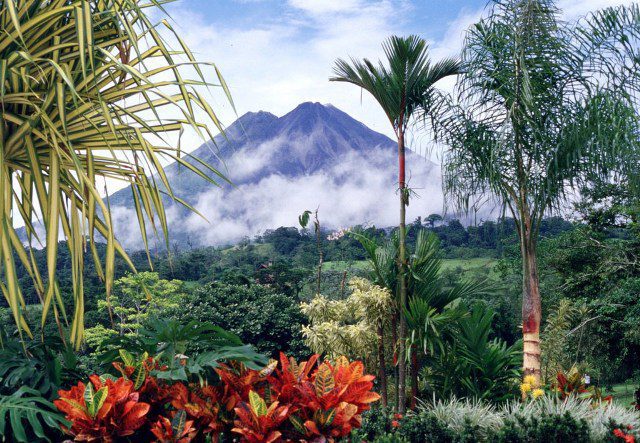
After a busy hurricane season, a record drought across much of the Western United States and the potential of an intemperate winter, more and more people are beginning to look at what they can do to mitigate climate change. As consumers look to make changes in their daily lives, they begin to examine not just their own habits, but the steps that are being taken by both the companies that supply their goods and the government that serves to protect their interests.
While many commercial interests have realized the benefit sustainability can bring to their bottom line, some governments, including portions of the United States government, have been either slow to accept climate change or outright resistant to admitting its existence. In many ways, Costa Rica stands in sharp contrast to this reticence.
The Paris Accord and a Nearly Fossil Fuel Free Power Grid
In 2015, in an attempt to fend off climate change and the meteorological calamities it would cause, 196 representatives of the United Nations Framework Convention on Climate Change met in Paris to set voluntary limits on greenhouse gas emissions, agree to steps for mitigation, and formulate a plan for adaptation. Of these 196 member states, 195 signed the agreement, the lone present hold out being Nicaragua, who felt the agreement did not go far enough (they have since agreed to sign the commitment). Although the US, after an administration change, would later signal its intent to withdraw from the agreement, much of the world’s governments and climate scientists applauded the efforts to stop climate change.
Meanwhile, in Costa Rica, a small country in Latin America, a glimpse of a better future had arrived as they powered their entire electrical grid for 285 days out of the year entirely on renewable, sustainable energy. In fact, for 2015 over 99% of their energy year-round was generated without the use of fossil fuels. These numbers are unprecedented for any country and garnered immediate attention. For those who know Costa Rica, however, it is hardly surprising.
A Tropical Paradise
Costa Rica sits nestled between Nicaragua and Panama, home to just under five million people. Its year-round tropical climate creates a thriving ecosystem for brilliantly colored flora and fauna and a landscape that contributes heavily to a bustling tourist trade. Green hills, rugged mountains, and lush forests are crisscrossed by numerous rivers of clear, blue water. One of its greatest resources, however, is its people.
The people of Costa Rica are largely progressive. It is one of the few nations without a standing army. They are welcoming to refugees. Together, they have built one of the most stable economies in the Americas, North or South. They have also decided to invest heavily in sustainable infrastructure products as custodians of the vast wealth of natural resources that surround them.
Pura Vida
You can find the roots of their environmentalism in a decidedly Costa Rican saying, Pura Vida. Much as the more familiar Hawaiian Aloha, Pura Vida can have many meanings. It is a greeting, a question, an answer, a comfort, and a parting. In English, it translates to “Pure Life”, but the meaning behind it is so much more. It is a recognition, among other things, of the balance our lives move in. It is no surprise a culture that recognizes balance as a very part of their society’s fabric would see the need for the same balance in the environment.
The Grid

Costa Rica’s grid was built for sustainability. Just as they had sought to stop large commercial deforestation to both protect their people and the environment, so too did they set out to create a system of power generation and delivery that worked with, rather than against nature. To do this, they focused their efforts on green technologies. Costa Rica’s power comes from five main generation sources:
- Wind Power – In commercial or civic operations, massive windmills attached to a generator are turned by strong winds, generating electricity that is fed into the grid. The harvesting of wind power is growing worldwide. Even in the US, wind farms can be found coast-to-coast, and personal electricity-generating windmills have long been a favorite of those who need power for off-grid living or power in remote locations.
- Solar Power – Large photovoltaic panels capture the sun’s light, converting it to electricity. Another growing green-energy trend is the use of solar power. As technology has improved, collection has become increasingly efficient, making what once seemed no more than an optimistic theory into a manageable power source for larger populations, with larger states such as Germany (with over 32,000 MW of solar generation capacity) leading the way.
- Biomass – Humans have long used biomass to heat their homes, cook their food, and even power their vehicles. While wood is still the primary fuel used, other substances, such as algae, plant crops, agricultural residue, and even methane gas, can provide a clean fuel-source for power generation. Rather than the carbon monoxide released by fossil fuels, biomass releases carbon dioxide, a much safer alternative. Responsibly cultivated and harvested biomass is easily renewable, lowering this method’s carbon footprint.
- Geothermal – With geothermal energy, the earth’s heat warms pools of water miles below the ground. The resulting steam, mixed with other gasses, is used by the generation facility to power turbines. While this method is largely considered renewable, care must be taken to filter out acids, greenhouse gases, or contaminants that, once escaped, could lead to an increase in the atmospheric buildup of these dangerous compounds.
- Hydroelectric Power – The water from lakes and rivers flows to the sea. Hydroelectric power stations make use of this movement. Whether placed across a river or in a lake’s dam, the water moves through turbines, turning them, and in so doing, generates electricity. This form of power generation requires a wet climate to function, making the tropics perfect for its use.
Costa Rica’s Green Success
On average, 68% of Costa Rica’s energy is generated through the use of hydroelectric power stations. Thanks to its plenteous lakes, rivers, and streams, there is a near constant source of power provided by their environment. Geothermal energy comes in a distant second with around 15% of their energy production. The remainder is generated through other means, both through sustainable methods as listed above and through the use of fossil fuels when necessary. The result is a country that, to this day, generates more than 98% of its power through sustainable means.
Costa Rica’s commitment to environmentally sound progress is receiving international attention. They are consistently named by multiple organizations as one of the greenest countries on earth. Organizations such as the New Economics Foundation laud them annually for their stewardship and responsible use of natural resources. Far from standing pat, Costa Rica has announced a goal of complete carbon neutrality by 2021, a lofty ambition that would see them continue a leadership role in the global climate conversation.
What Costa Rica’s Success Doesn’t Mean

While it’s easy to get wrapped up in positive environmental news, that news must be taken with a dose of reality. Plenty of activists will point to Costa Rica as the solution to climate change. Unfortunately, that’s not entirely true. The situation, as it often is, is much more complex.
- The Costa Rican System Will Not Work Everywhere. – Costa Rica has a huge amount of readily available, sustainable natural resources. Many places simply don’t have that luxury. Solar power works best where there is lots of sun, like you find in the tropics. Hydroelectric power requires plenty of rainfall for peak efficiency, also found in the tropics. Even during climate change, the area along the equator will experience less fluctuation of weather initially than other areas of the globe.
- It Only Works When The Resources Cooperate – Less fluctuation is far from no fluctuation. Costa Rica’s increased hydroelectric output in 2015 that allowed for the country’s eye-popping statistics was largely due to torrential downpours, likely as a result of climate change. This followed, however, a historic drought, during which time there was more reliance on fossil fuels and higher energy prices for the consumer.
- There Was Not A Large Population To Support – Costa Rica’s population weigh in at just under 5 million people spread over a relatively small area of land that is packed with natural resources. Larger populations require exponentially more power both for the direct needs of their citizens and for the power requirements of the support structures requisite to support a larger, more densely packed population.
In many ways, Costa Rica’s success was the result of, for lack of a better term, the perfect storm. It was a near-unique confluence of events. While extremely noteworthy, it would be incorrect to assume that the same results would be had anywhere else in the world. That doesn’t mean, however, that other states have nothing to learn from Costa Rica’s fine example.
What Costa Rica’s Success Does Mean
Too often moves toward sustainability are viewed as a simple dichotomy, you are simply sustainable or not. The reality is significantly more nuanced. While Costa Rica’s numbers may not currently be matched by another state, there are lessons to be learned. Here’s what other states can learn from Costa Rica’s example:
- Sustainability Is a Journey, Not a Destination. – Perhaps the most inspiring aspect of Costa Rica’s success is their push for more. Make no mistake, the sustainable infrastructure of their grid was not built overnight, nor are they done building. Costa Rica continues to build toward a more environmentally friendly future. Tomorrow’s power doesn’t have to be perfect, it just has to be better.
- Sustainability Is Possible – Case studies are important when making decisions in both business and government. They help ensure that money is being invested along avenues that have the potential for gain. There was always a need for a first country to lead the way in sustainable power production, and Costa Rica stepped up. While other countries may not be able to equal their green-efficiency yet, Costa Rica has proven that progress can be made and a strong economy maintained in the process of weaning a state off of fossil fuels.
- Advancements In Technology Are Picking Up Steam – Innovation in the green sector has taken off, driven primarily by consumers. Today’s connected customer is better educated, with more information at their fingertips, than ever before. They make green choices in their day-to-day lives, and that includes the products they buy and the sources they prefer for their energy. This is driving providers of goods and services to either adapt or be left behind.
- Climate Change Isn’t Going Anywhere – For most of the world, climate change is already a reality. It adds an urgency to innovation and a motivation to the populace to demand change. While there is no solution that offers an immediate fix to the damage already done, progress can and will be made if for no other reason than to ensure our survival as a species.
What We Can Learn
Repairing the ecological damage that has led us to climate change is a long-term process that will need to be addressed on multiple levels. For the individual, mindfulness will be required to make thoughtful decisions about products purchased, services used, and the habits–good and bad–that we fall into as we move through our daily lives. Commercial interests will need to show this same mindfulness on a grander scale, balancing the needs of the bottom line with sustainability efforts. The good news is, big businesses from GE to small businesses like Atlanta Light Bulbs are helping lead the way in providing greener products and sustainable technologies to consumers. Meanwhile, governments now have a roadmap to nationwide renewable energy thanks to Costa Rica.
By focusing on infrastructure that sustainably works with their environment, progress can be made toward a greener power grid. It is up to governments to identify how they too can balance environmental needs with the demands of their populace. While not every renewable energy source will provide large-scale energy generation in every location, there is a method which will provide some sustainable energy. As we experience even more effects of climate change, sustainability will become more than a trendy buzzword, it will be a necessity.
About Author
Carolyn Clarke is a freelance blogger who has been writing about sustainable technology and the environment for nearly 10 years. She serves as a marketing consultant for small businesses interested in sustainable technology, including Atlanta Light Bulbs.
